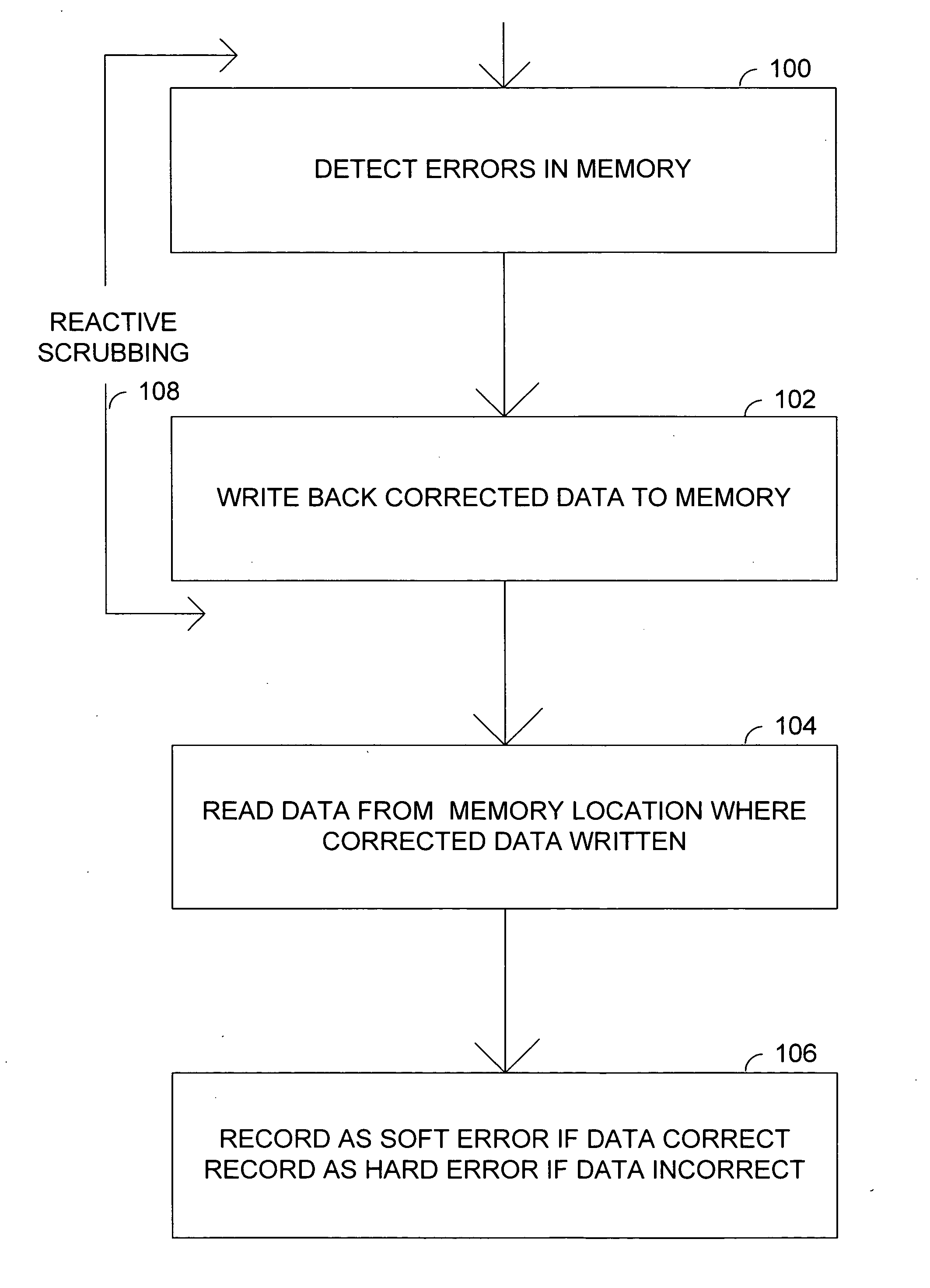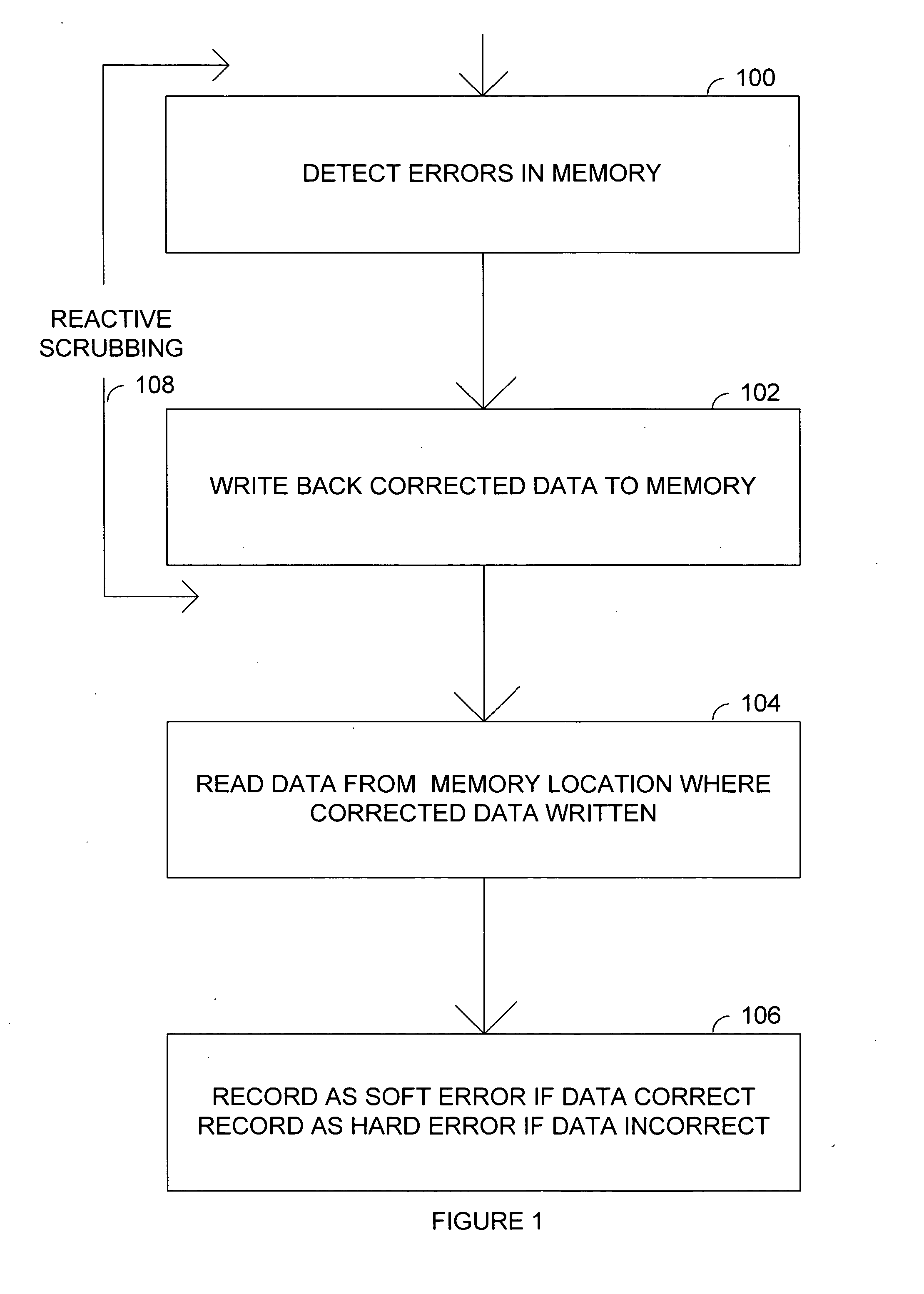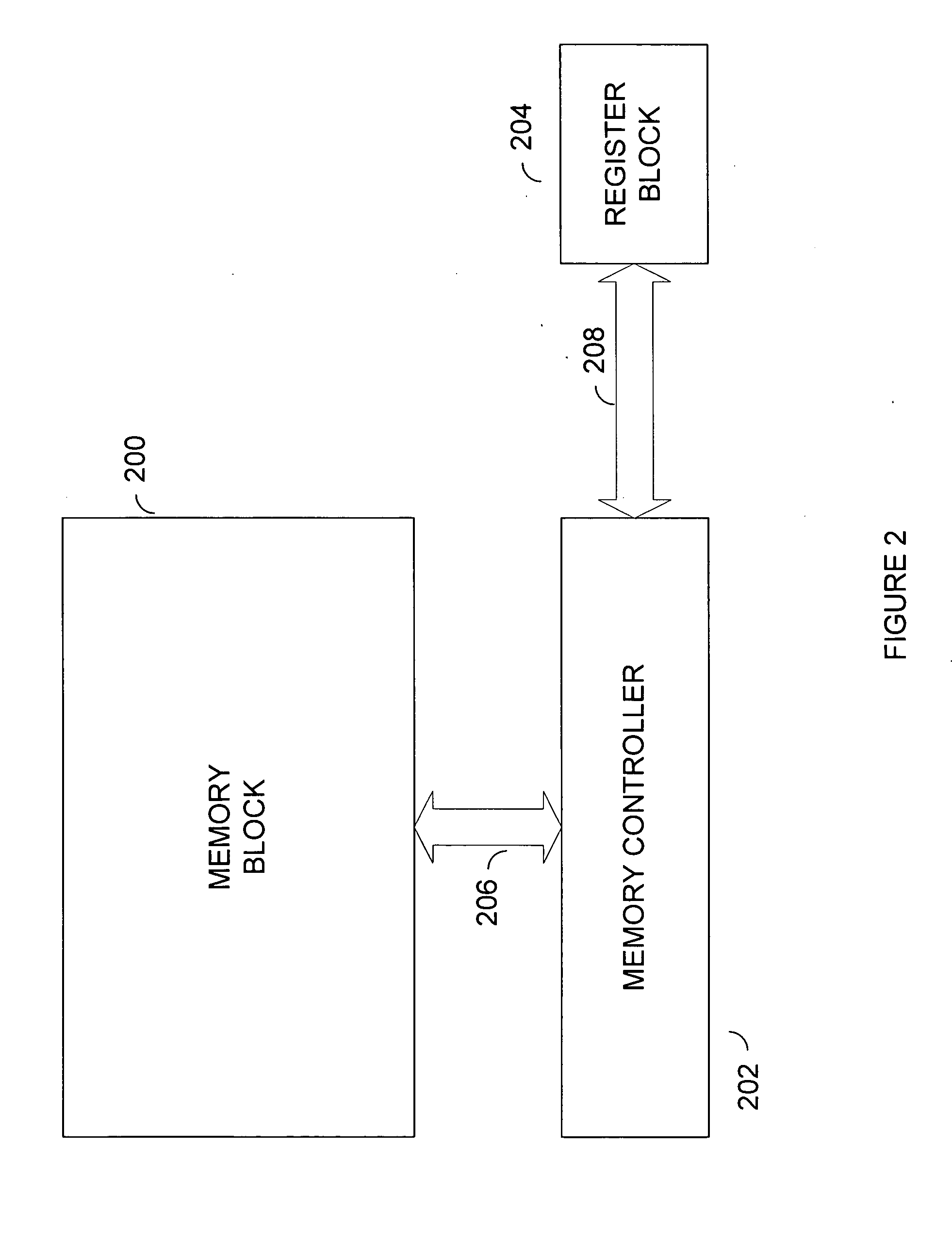Determining hard errors vs. soft errors in memory
a technology of memory error and hard error, applied in error detection/correction, instruments, computing, etc., can solve the problems of soft error, soft error, neutrons can be particularly troublesome,
- Summary
- Abstract
- Description
- Claims
- Application Information
AI Technical Summary
Benefits of technology
Problems solved by technology
Method used
Image
Examples
Embodiment Construction
[0011] An embodiment of this invention determines whether errors detected in memory are hard errors or soft errors. Memory includes but is not limited to DRAMs (dynamic random access memory), SRAMs (static random access memory), and latches. A common function performed by memory controllers is scrubbing. One type of scrubbing, among others relevant to this invention, includes “reactive scrubbing.”
[0012] One application of reactive scrubbing detects errors in data read from DRAM memory using an error-correction algorithm and then writes back corrected data to the location where errors where detected in the DRAM memory. Error-correction algorithms include but are not limited to Hamming, Reed-Solomon, Reed-Muller, and convolution codes. Current reactive scrubbing techniques do not indicate whether the errors were soft errors or hard errors.
[0013]FIG. 1 is flow chart showing an embodiment of a method for determining whether errors are soft errors or hard errors. The first step, 100, of...
PUM
 Login to View More
Login to View More Abstract
Description
Claims
Application Information
 Login to View More
Login to View More - R&D
- Intellectual Property
- Life Sciences
- Materials
- Tech Scout
- Unparalleled Data Quality
- Higher Quality Content
- 60% Fewer Hallucinations
Browse by: Latest US Patents, China's latest patents, Technical Efficacy Thesaurus, Application Domain, Technology Topic, Popular Technical Reports.
© 2025 PatSnap. All rights reserved.Legal|Privacy policy|Modern Slavery Act Transparency Statement|Sitemap|About US| Contact US: help@patsnap.com



